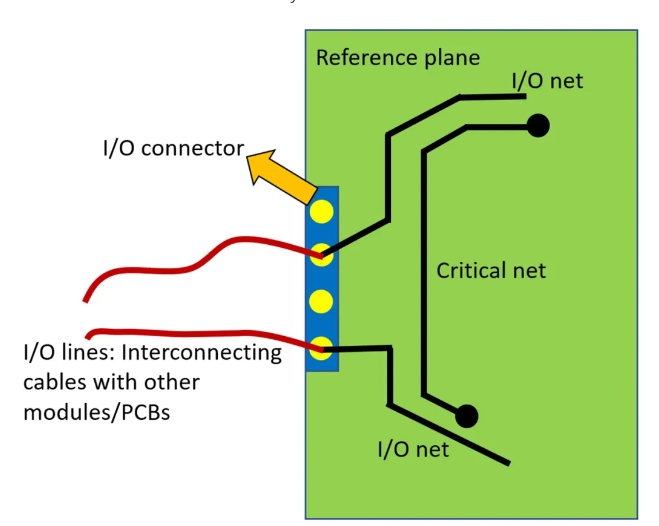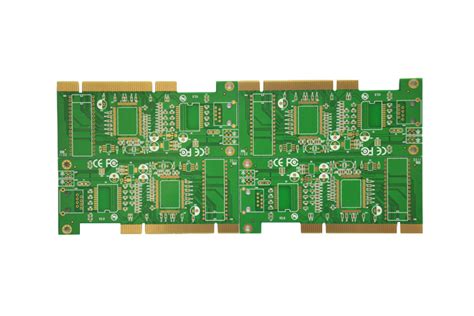Measures to improve the routing rate of PCB wiring design
Next, we will introduce how to improve the routing rate of PCB wiring design.
In PCB wiring design, there is a complete set of methods to improve the routing rate of PCB design. Here, we provide effective techniques to improve the routing rate and design efficiency of PCB design, which can not only save project development cycles for customers, but also maximize the quality of finished designs.
Determine the size and routing layers
At the beginning of PCB design, it is necessary to determine the size and routing layers of the circuit board. If the design requires the use of high-density ball grid array (BGA) components, the minimum number of routing layers required to route these components must be considered. The number of routing layers and the stacking pattern will directly affect the routing and impedance of the printed lines. The size of the board helps determine the width of the lamination and printed lines to achieve the desired design effect.
For many years, people have believed that the fewer layers, the lower the cost, but there are many other factors that affect the manufacturing cost of the circuit board. In recent years, the cost difference between laminates has been greatly reduced. At the beginning of the design, it is better to use more circuit layers and evenly distribute the copper coating to avoid a small number of signals that do not meet the defined rules and space requirements at the end of the design, so as to be forced to add new layers. Careful planning before design will reduce a lot of wiring troubles.

Use the tool under the correct rules
Automatic routing tools do not know what to do by themselves. In order to complete the routing task, routing tools need to work under the correct rules and constraints. Different signal lines have different routing requirements. All signal lines with special requirements should be classified, and different design classifications should also be different. Each signal category should have a priority, and the higher the priority, the stricter the rules. Rules on printed line width, maximum number of holes, parallelism, interaction between signal lines, and layer limit have a great impact on the performance of routing tools. Careful consideration of design requirements is an important step for successful routing.
In order to optimize the PCBA assembly process, design for manufacturability (DFM) rules impose restrictions on component layout. If the assembly department allows parts to move, the circuit can be properly optimized to facilitate automatic routing. The defined rules and constraints affect the layout design.
The routing channels and through-hole areas should be considered when routing.
These paths and areas are obvious to designers, but the automatic routing tool only considers one signal at a time, and by setting routing constraints and setting the layers where signal lines can be deployed, the routing tool is able to do exactly what the designer envisions.
In the fan-out design stage, to enable the automatic routing tool to connect the component pins, each pin of the surfacing device should have at least one through-hole so that the board can be connected internally, tested in-circuit (ICT), and the circuit reprocessed if additional connections are required.
To maximize the efficiency of the automatic routing tool, make sure to use the largest hole size and printed lines with an ideal spacing of 50mil. Use the type of through-hole that maximizes the number of routing paths. When designing fan-out, the issue of circuit online testing should be considered. Test fixtures can be expensive and are often ordered before formal production. It is too late to consider adding nodes to achieve 100% testability.
With careful consideration and prediction, the design of circuit online testing can be carried out in the early stages of design and implemented in the later stages of the production process. Based on the routing path and circuit online testing, the type of through-hole fan-out can be determined. Power and grounding also affect the routing and fan-out design. To reduce the filter capacitor impedance of the cable, the via should be as close to the pin of the surface mount device as possible. Manual routing can be used when necessary, which may affect the routing path originally envisioned and may even cause you to reconsider what type of routing to use. Therefore, the relationship between the impedance set by the priority specification and the holes and pins must be considered.
Although this article is mainly about automatic routing, manual routing is an important process in printed circuit board design now and in the future. Manual routing and automatic routing tools are used to complete the routing work. No matter how many critical signals there are, these signals usually must first be carefully designed to achieve the desired performance through circuit design. After the routing is completed, the relevant engineering personnel will check the routing of these signals, which is relatively easy to check. After the inspection, these lines are fixed and the remaining signals are automatically routed.
The routing of critical signals requires consideration of controlling some electrical parameters during routing, alternating inductance and EMC, etc., and the routing of other signals is similar. All EDA manufacturers will provide a way to control these parameters. After understanding what input parameters the automatic routing tool has and the impact of the input parameters on routing, the quality of automatic routing can be guaranteed to a certain extent.
If general rules are used to automatically route signals. By setting restrictions and prohibited routing areas to give a given signal the layer used and the number of vias used, the routing tool can automatically route according to the engineer’s design ideas. There is no limit on the number of layers and vias used by the automatic routing tool. Every layer will be used during automatic routing, and many vias will be generated.
After setting the constraints and applying the created rules, the automatic routing will achieve results close to the expectations. Of course, some finishing work may be required, and space for other signal and network routing needs to be ensured. After some designs are completed, they are fixed to prevent them from being affected by the subsequent routing process.

Use the same steps to route the remaining signals.
The number of routing times alternates the complexity of the circuit and the number of general rules you define. After each type of signal is completed, the constraints for the remaining network routing will be reduced. But with it, the current automatic routing tools are very powerful and can usually complete 100% of the routing. However, when the automatic routing tool does not complete all signal routing, the remaining signals need to be manually routed.
If the EDA tool software you are using can list the routing lengths of the signals, check these data and you may find that some signals with few constraints have very long routing lengths. This problem is relatively easy to deal with. Manual editing can change the signal routing length and reduce the number of vias. In the process of sorting, you need to judge what wiring is reasonable and what wiring is unreasonable. Like manual wiring design, automatic wiring design can also be sorted and edited during the inspection process.







